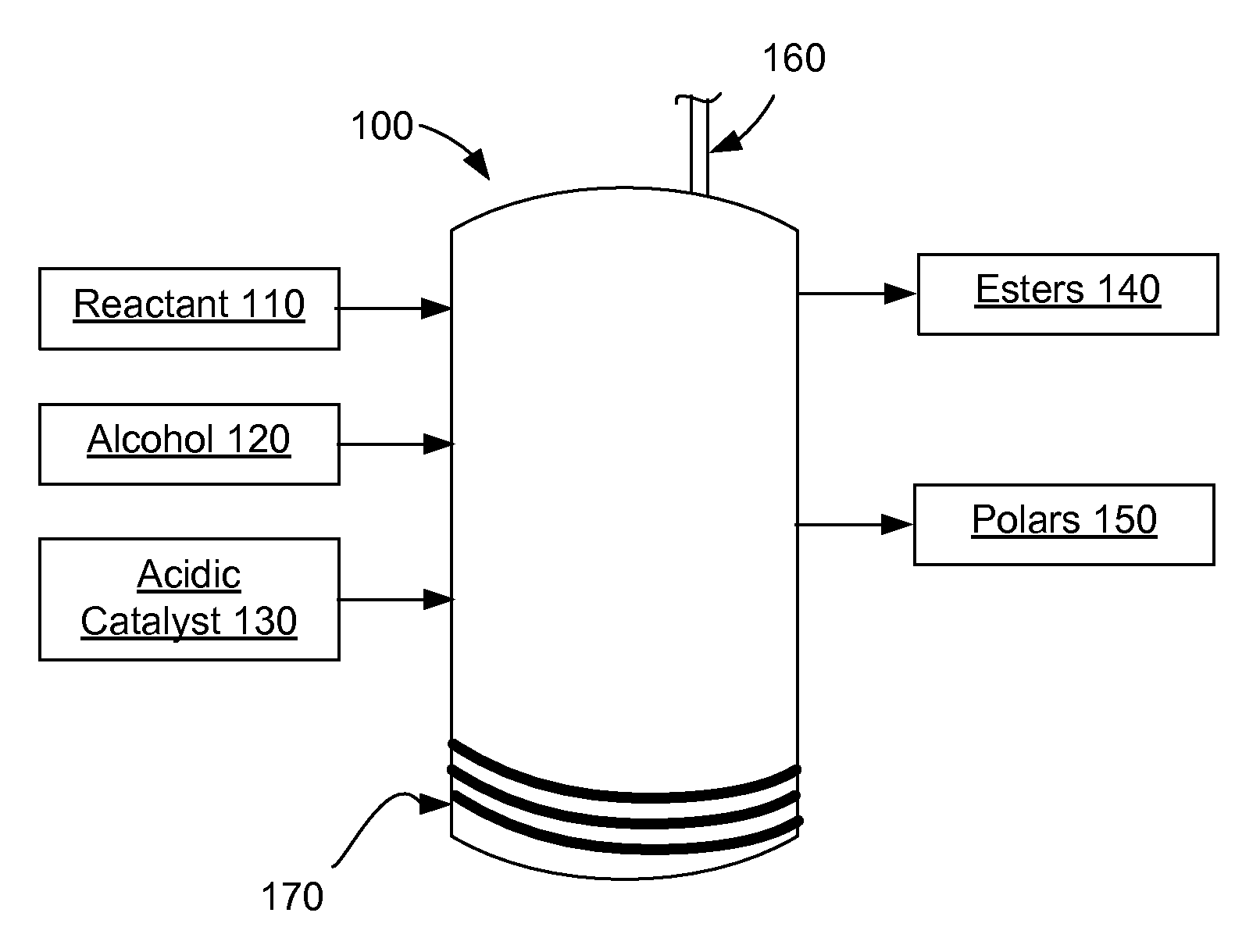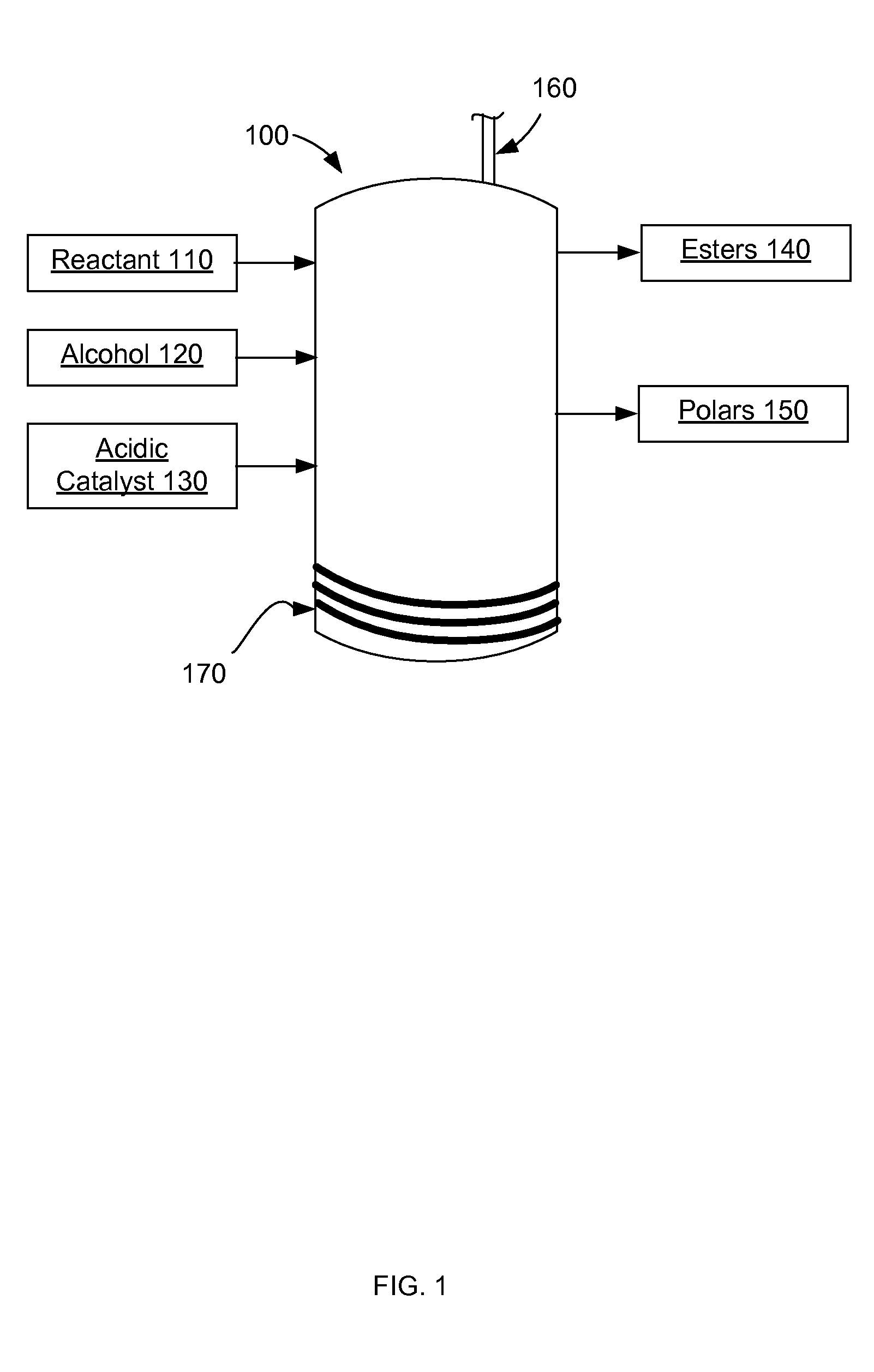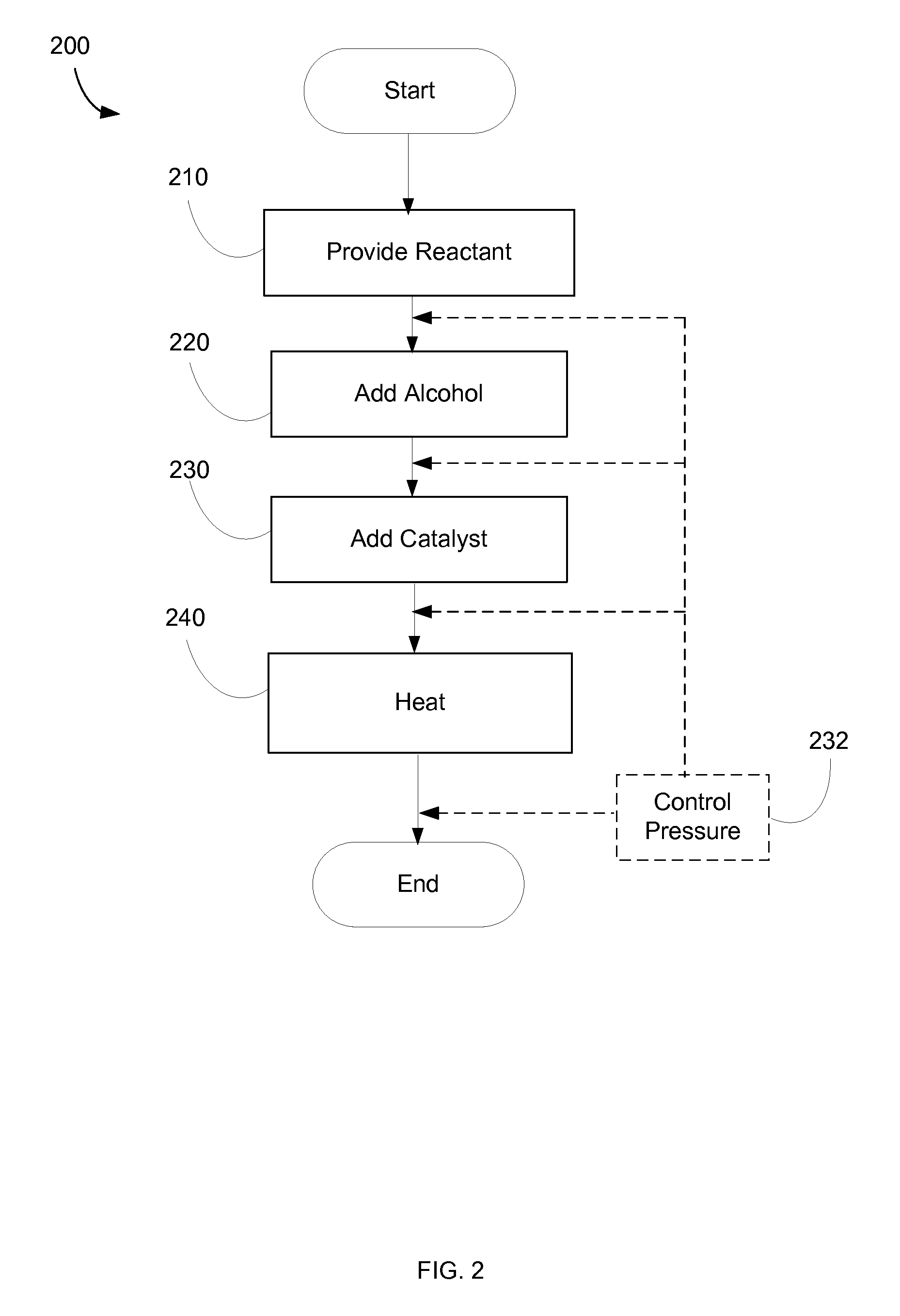Processing Lipids
a technology of lipids and lipids, applied in the field of processing lipids, can solve problems such as inability to tolerate variations in feedstock properties
- Summary
- Abstract
- Description
- Claims
- Application Information
AI Technical Summary
Benefits of technology
Problems solved by technology
Method used
Image
Examples
Embodiment Construction
[0014]A reactant comprising lipids may be reacted with alcohols to convert the lipids to other chemicals. A lipid may be converted to a fatty acyl alkyl ester (which may be described as a fatty acid alkyl ester, according to the fatty acid from which the acyl moiety was derived). Exemplary esters include such as a fatty acid methyl esters. In some embodiments, an acid-catalyzed process may convert lipids to esters. An alkyl ester may be made from a lipid using an alcohol that provides an alkyl moiety to an ester derived from the lipid. Some reactants include triglycerides. Some reactants include free fatty acids. Some reactants include polar lipids such as glycolipids, phospholipids, and / or other lipids having hydrophilic head groups. Some processes include nonpolar lipids, such as a sterol-ester (e.g., an ester of cholesterol), or a polar lipid that has been modified to be hydrophobic (e.g., by attaching or substituting nonpolar moieties to polar moieties of the polar lipid). Certa...
PUM
| Property | Measurement | Unit |
|---|---|---|
| Temperature | aaaaa | aaaaa |
| Temperature | aaaaa | aaaaa |
| Temperature | aaaaa | aaaaa |
Abstract
Description
Claims
Application Information
 Login to View More
Login to View More - R&D
- Intellectual Property
- Life Sciences
- Materials
- Tech Scout
- Unparalleled Data Quality
- Higher Quality Content
- 60% Fewer Hallucinations
Browse by: Latest US Patents, China's latest patents, Technical Efficacy Thesaurus, Application Domain, Technology Topic, Popular Technical Reports.
© 2025 PatSnap. All rights reserved.Legal|Privacy policy|Modern Slavery Act Transparency Statement|Sitemap|About US| Contact US: help@patsnap.com



